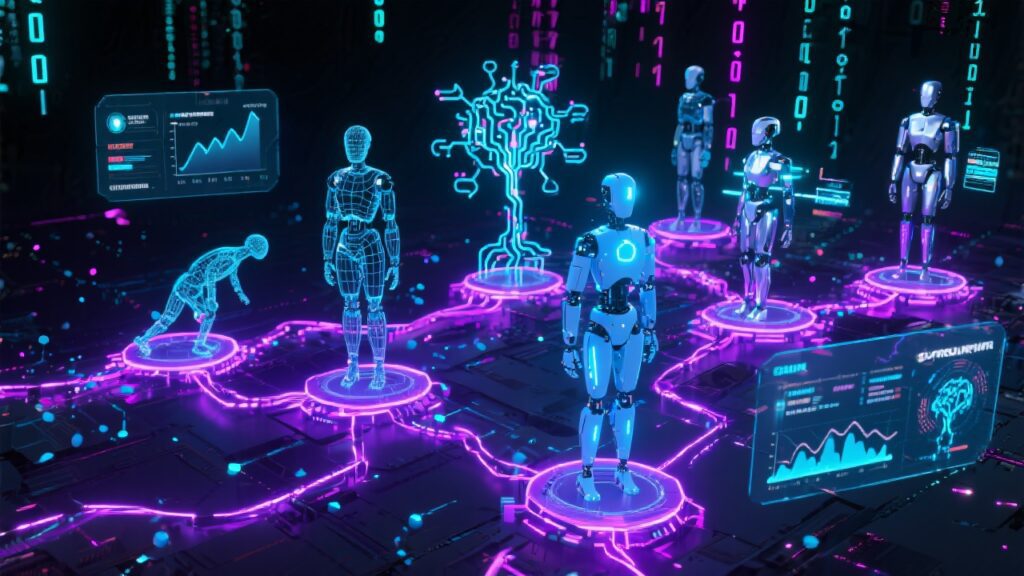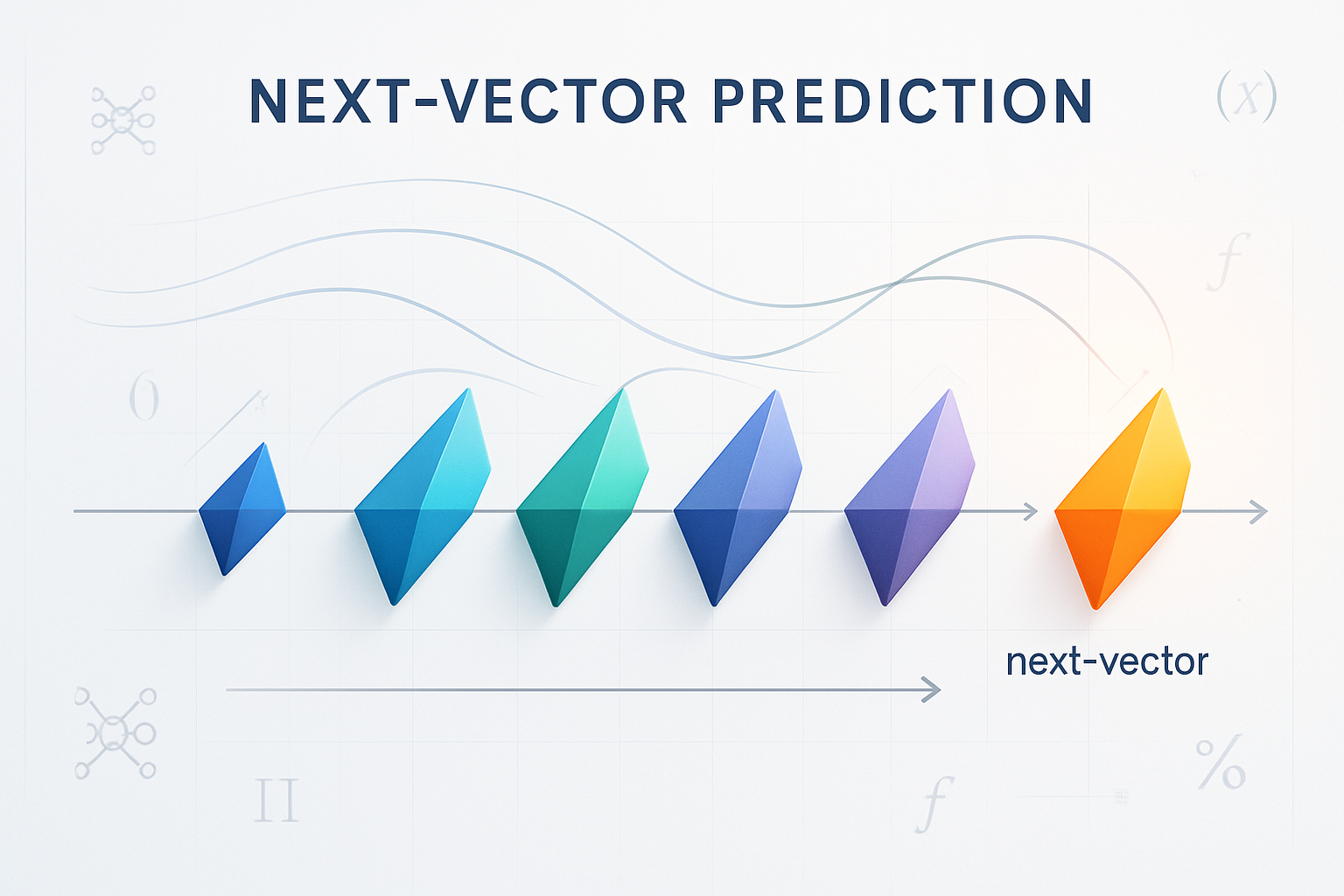The artificial intelligence landscape is undergoing a profound transformation. Where once static models dominated, a new paradigm emerges—one where AI agents don’t merely execute predefined instructions but continuously evolve, adapt, and refine themselves through environmental interaction and feedback. This revolutionary concept, detailed in a comprehensive survey by Fang et al., represents nothing less than the next evolutionary leap in artificial intelligence: self-evolving AI agents.
The Genesis of Self-Evolution in AI
Picture this: an AI agent that learns not just from training data, but from every interaction, every failure, every success. The authors introduce us to a world where agents embody what they term the “Three Laws of Self-Evolving AI Agents”—a fascinating homage to Asimov’s robotic principles, yet fundamentally reimagined for our modern context.
First: Endure (Safety Adaptation) — agents must maintain safety and stability during any modification. Second: Excel (Performance Preservation) — they must preserve or enhance existing task performance. Third: Evolve (Autonomous Evolution) — they must autonomously optimize their internal components in response to changing environments.
These principles aren’t mere philosophical constructs; they represent a fundamental shift from the traditional paradigm of frozen, deployed models to dynamic, living systems that embody true artificial intelligence.
From Static Training to Dynamic Evolution: A Paradigmatic Revolution
The journey from Model Offline Pretraining (MOP) to Multi-Agent Self-Evolving (MASE) systems represents one of the most significant conceptual leaps in AI development. Consider the trajectory:
MOP represents our familiar world—massive models trained on static datasets, then deployed unchanged. MOA (Model Online Adaptation) introduced the first hints of dynamism through techniques like supervised fine-tuning and reinforcement learning from human feedback. MAO (Multi-Agent Orchestration) expanded beyond single models to coordinated systems communicating through structured protocols.
But MASE? This is where the magic truly happens. Here, populations of agents engage in continuous refinement loops, autonomously adjusting their prompts, memory structures, tool-use strategies, and even their interaction topologies based on environmental feedback and meta-rewards. It’s not just adaptation—it’s evolution in real-time.
The Architecture of Autonomous Intelligence
The authors present a unified conceptual framework that elegantly captures the essence of self-evolving systems through four interconnected components:
System Inputs define the problem space—task descriptions, training datasets, contextual information that frames what the agent must accomplish. These inputs can operate at task-level (optimizing overall performance on specific tasks) or instance-level (enhancing performance on individual examples).
Agent Systems represent the core that’s subject to optimization. Whether single agents or collaborative multi-agent systems, these entities embody the decision-making processes and functionality that respond to given inputs. The beauty lies in their modularity—components like LLMs, prompting strategies, memory modules, and tool-use policies can be optimized individually or jointly.
Environment provides the operational context where agents execute and receive feedback. This isn’t merely a passive backdrop but an active participant in the evolutionary process, generating performance signals that guide optimization through metrics ranging from accuracy and F1 scores to sophisticated LLM-based evaluators.
Optimizers complete the loop, implementing the algorithms and strategies that refine agent systems based on environmental feedback. They define both the search space of possible configurations and the optimization algorithms that explore this space—from gradient descent and Bayesian optimization to evolutionary strategies and reinforcement learning.
Single-Agent Evolution: The Foundation of Intelligence
The optimization of individual agents reveals fascinating parallels to biological evolution. LLM Behavior Optimization represents perhaps the most fundamental level of enhancement. Through supervised fine-tuning, agents learn from carefully constructed reasoning trajectories, developing step-by-step problem-solving capabilities. Methods like STaR (Self-Taught Reasoner) demonstrate how agents can iteratively improve by training on their own successful solutions while refining failed attempts.
Reinforcement learning approaches treat reasoning as sequential decision-making, rewarding agents for producing correct or high-quality reasoning paths. The emergence of techniques like Agent Q, which combines Monte Carlo Tree Search with self-critique mechanisms, showcases how agents can learn from both successes and failures through sophisticated exploration strategies.
Test-time scaling opens another dimension entirely. Rather than modifying model parameters, these approaches enable agents to “think longer” during inference. Search-based strategies like Tree-of-Thoughts and Graph-of-Thoughts allow agents to explore multiple reasoning paths simultaneously, while feedback-based approaches use verifiers to guide generation iteratively.
The Art and Science of Prompt Evolution
Perhaps no component demonstrates the complexity of agent evolution more vividly than prompt optimization. These linguistic instructions that guide agent behavior exhibit extraordinary sensitivity—minor variations in phrasing can dramatically alter performance. The field has evolved through multiple generations of approaches:
Edit-based methods treat prompt optimization as local search, iteratively refining human-written prompts through operations like token insertion, deletion, or substitution. Generative approaches leverage LLMs to create entirely new prompts conditioned on various optimization signals—from input-output examples to meta-prompts specifying task objectives.
Text gradient-based optimization introduces a particularly elegant concept: natural language feedback that functions as “gradients” guiding prompt updates. Methods like TextGrad demonstrate how LLM-generated suggestions can iteratively improve not just prompts but entire compound AI systems.
Evolutionary approaches maintain populations of candidate prompts, applying biological-inspired operators like mutation and crossover. EvoPrompt and PromptBreeder showcase how genetic algorithms can discover high-performing prompts through systematic exploration of linguistic space.
Memory: The Foundation of Continuous Learning
Agent memory systems represent the bridge between momentary interactions and long-term intelligence. Short-term memory optimization focuses on managing limited contextual information within working memory through summarization, selective retention, and dynamic context filtering. Systems like COMEDY and ReadAgent demonstrate how extracted memory traces can maintain coherence throughout extended interactions.
Long-term memory optimization extends beyond immediate context windows through persistent, scalable storage. The emergence of Retrieval-Augmented Generation (RAG) paradigms enables agents to incorporate relevant external knowledge into reasoning processes. Advanced systems like HippoRAG implement hippocampus-inspired indexing through knowledge graphs, while GraphReader uses graph-based structures to capture conversational dependencies.
The sophistication of memory control mechanisms during inference—determining what, when, and how to store, update, or discard information—represents a crucial frontier. Systems like MEM1 leverage reinforcement learning to maintain evolving internal memory states, selectively consolidating new information while discarding irrelevant content.
Tools: Extending the Boundaries of Capability
Tool optimization reveals how agents transcend their inherent limitations by interfacing with external resources. Training-based optimization teaches LLMs tool interaction through supervised fine-tuning on high-quality tool-use trajectories. Methods like ToolLLM and GPT4Tools demonstrate how more powerful models can generate instruction-trajectory pairs for training specialized agents.
Reinforcement learning approaches like ReTool and Nemotron-Research-Tool-N1 show how lightweight supervision in interactive environments can yield more generalizable tool-use capabilities than static training data.
Inference-time optimization enhances tool usage without parameter modification through optimized documentation representation and structured reasoning algorithms. EASYTOOL transforms diverse tool documentation into unified instructions, while DRAFT employs interactive frameworks that iteratively refine documentation based on feedback.
Perhaps most intriguingly, tool functionality optimization moves beyond using existing tools to creating new ones. Systems like CREATOR and LATM generate both documentation and executable code for novel tasks, while CRAFT leverages reusable code snippets to construct tools for unseen scenarios.
Multi-Agent Evolution: The Emergence of Collective Intelligence
The evolution from single-agent to multi-agent optimization represents a quantum leap in complexity and capability. Multi-agent systems (MAS) decompose complex tasks among specialized agents, enabling parallel execution, enhanced robustness, and inherent scalability. The architectural landscape spans hierarchical structures with explicit task decomposition, centralized systems following manager-follower paradigms, and decentralized networks where agents collaborate as peers.
Communication mechanisms range from structured outputs using JSON and XML formats to natural language exchanges that preserve rich contextual details. Emerging standardized protocols like A2A, ANP, and MCP create more inclusive and interoperable agent ecosystems.
The shift toward self-evolving multi-agent systems transforms workflow design from manual configuration to automated discovery. Prompt optimization in multi-agent contexts extends single-agent techniques to coordinate multiple agents and task dependencies. AutoAgents demonstrates how meta-agents can optimize entire team configurations through structured dialogue.
Topology optimization treats communication structure as an optimization target rather than a fixed constraint. Code-level approaches like AutoFlow and AFlow represent workflows as executable programs, enabling compositional reuse and automated verification. Communication-graph methods like GPTSwarm and G-Designer optimize agent connections through continuous edge probabilities and variational autoencoders.

Domain-Specific Evolution: Tailored Intelligence
The application of self-evolving agents to specialized domains reveals the technology’s transformative potential. Medical applications showcase systems like MedAgentSim and PathFinder that continuously refine diagnostic capabilities through interaction with clinical data and expert feedback. Molecular discovery platforms like CACTUS and ChemAgent demonstrate how agents can evolve laboratory procedures and hypothesis generation strategies.
Programming domains witness agents like CodeAgent and Self-Debugging that iteratively improve code generation and error correction capabilities. Financial applications through systems like FinCon and FinRobot show how agents adapt to market dynamics and regulatory changes.
Evaluation, Safety, and Ethical Frontiers
The evaluation of self-evolving systems introduces unprecedented challenges. Traditional metrics prove insufficient when systems continuously change and adapt. The authors emphasize the critical importance of safety considerations—ensuring that evolution preserves beneficial behaviors while preventing harmful adaptations. Ethical frameworks must address questions of autonomy, accountability, and transparency in systems that modify their own behavior.
The implementation of safety constraints during self-evolution requires sophisticated monitoring and verification mechanisms. Systems must balance exploration with stability, ensuring that adaptive changes enhance rather than compromise performance and safety.
The Future Landscape: Toward Lifelong Intelligence
The vision of lifelong, self-evolving agentic systems extends beyond current capabilities toward truly autonomous intelligence. These systems aim to monitor their own performance, preserve beneficial capabilities through controlled updates, and autonomously adapt multiple components in response to environmental changes.
The implications span scientific discovery, software engineering, human-AI collaboration, and physical world interaction through robotics and IoT devices. By treating agents as reconfigurable computational entities capable of self-evolution and coordination, this paradigm offers a pathway toward scalable, sustainable, and trustworthy AI.
Conclusion: The Dawn of Autonomous Intelligence
Self-evolving AI agents represent more than technological advancement—they embody a fundamental reconception of artificial intelligence from static tools to dynamic partners. The comprehensive framework presented by Fang et al. provides both theoretical foundation and practical guidance for developing systems that learn, adapt, and evolve throughout their operational lifetime.
As we stand at the threshold of this new era, the challenge lies not merely in developing more sophisticated algorithms but in ensuring that these evolving systems remain aligned with human values and beneficial outcomes. The Three Laws of Self-Evolving AI Agents provide a starting point, but the full realization of this vision will require continued innovation in safety, evaluation, and ethical frameworks.
The future belongs not to static models but to living systems that grow, learn, and evolve alongside the environments they serve. In this paradigm, artificial intelligence becomes less artificial and more genuinely intelligent—not just in capability but in adaptability, resilience, and wisdom.










